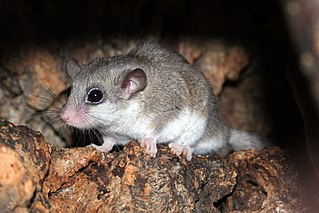
A dormouse is a rodent of the family Gliridae. Dormice are nocturnal animals found in Africa, Asia, and Europe. They are named for their long, dormant hibernation period of six months or longer.

The Europeanedible dormouse or European fat dormouse is a large dormouse and one of only two living species in the genus Glis, found in most of Europe and parts of western Asia. The common name comes from the Romans, who ate them as a delicacy.

Glis is a genus of rodent that contains two extant species, both known as edible dormice or fat dormice: the European edible dormouse (Glis glis) and the Iranian edible dormouse. It also contains a number of fossil species.

The Japanese dormouse is a species of rodent in the family Gliridae endemic to Japan. It is the only extant species within the genus Glirulus. Its natural habitat is temperate forests. In Japanese, it is called yamane. Among dormice, it has the special ability of running at great speed upside down, suspended from branches. Its main food is fruit, insects, berries, nuts, and even flowers. It tends to inhabit arboreal nesting sites to avoid interspecific competition with the small Japanese field mouse because of their sympatric relationship.
The Iranian edible dormouse or Iranian fat dormouse is a species of dormouse native to Western and Central Asia. It is one of only two species in the genus Glis.




